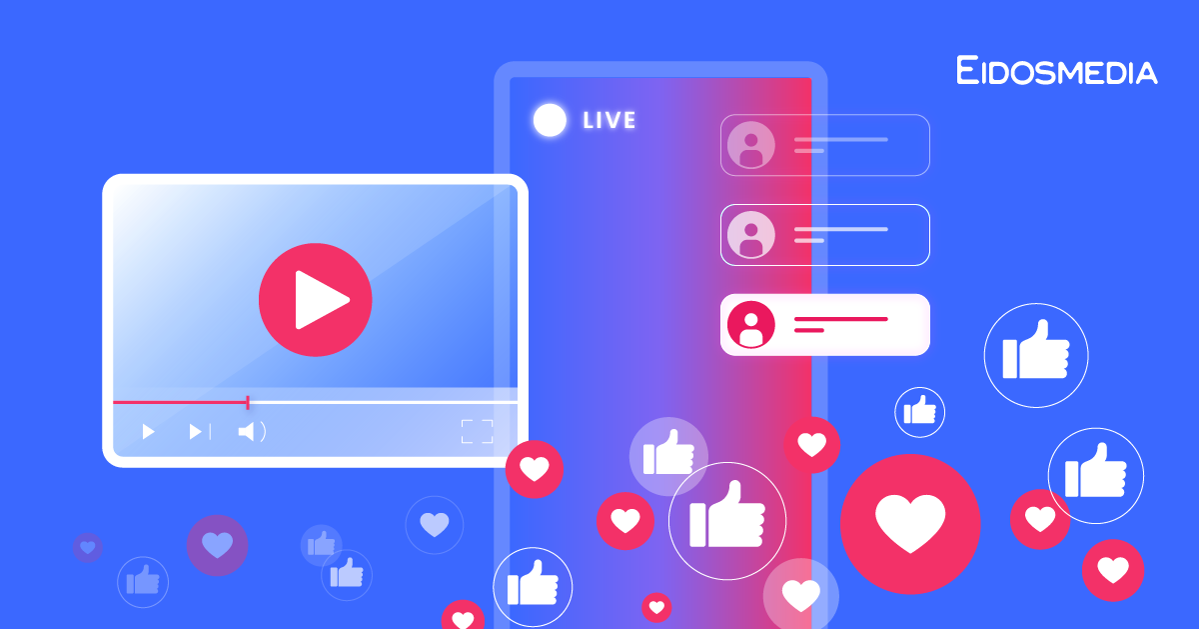The rise and rise of YouTube video
In the last year YouTube has broken audience records and continues to dominate other streaming platforms and social networks. What's the secret to its success and can it continue?
YouTube has come a long way from its early days. In fact, 2024 saw the video-sharing service hit many new milestones. Not only is it the most-watched streaming source in the U.S., it has a worldwide audience of nearly 3 billion, including 100 million paid subscribers to its ad-free YouTube Premium service.
Perhaps even more impressive is that, so far, YouTube has achieved all of this success with relatively little of the regulatory and political strife experienced by other social media platforms. How have they managed this feat, and can this success continue? Let’s find out.
The move into the living room
While YouTube may have once been the province of audiences that enjoyed watching videos on their mobile devices or even their desktops, new stats tell us that YouTube is taking over televisions. Thanks to this trend, the watch time for sports on the platform is up 30% year over year, and people “watched more than 400 million hours of podcasts on their TVs every month,” The Verge reports.
Part of the fun of YouTube has always been commenting on and otherwise interacting with content, an experience that is hard to replicate on the TV screen — but YouTube is trying. “It launched a way to sync your phone and your TV, so you can watch a video on the big screen and interact with it on the small one,” according to The Verge. “Earlier this year, the company redesigned the TV interface to make it easier to find comments, links, and channel pages while you’re watching a video.”
Widening the range
Meanwhile, some think YouTube’s success is due, in part, to being a relatively stable platform for creators and that it bundles many different types of content — from long-form video essays and documentaries to shorts and podcasts — at a time when other platforms are doing the opposite. Users fed up with multiple subscriptions like that they can get a wide variety of content on YouTube — but that’s just one advantage.
Creator-friendly
Much of the internet video buzz centers on TikTok, but YouTube has about 2.5 million monthly users, more than double TikTok’s numbers. On traditional television screens, YouTube also has a leg up because most of its videos are already suited for horizontal viewing. It’s also friendlier for content creators.
While TikTok stars who get at least 100,000 views in 30 days are paid from a shared fund, YouTube creators are paid a portion of the ad revenue generated by their videos. Additionally, Lifewire points out, “YouTube's focus on subscriptions encourages more direct engagement with an audience and a slower pace, with many creators uploading once or twice a week. TikTok's shorter, quicker videos offer less chance for direct engagement, and many TikTok creators try to upload once every day.”
The regulatory edge
YouTube also exists outside of many of the laws that govern traditional broadcast television. In the U.S., tech platforms are not responsible for the content posted by users which means YouTube is treated more like Facebook than NBC. Still, they are subject to copyright laws and have been held responsible for collecting data on their youngest users without parental permission.
In the E.U., though, laws are starting to try to rein in tech platforms. However, with so much user-generated content on YouTube, regulating it is tough. YouTube uses humans and automation to screen content to ensure content abides by community guidelines — such as not using hate speech or slurs. Users who do not follow the rules may be cautioned, demonetized, or eventually banned. Demonetization - stripping a creator of revenue income from posting content - has proved an effective sanction, while preserving the right to free speech. Logan Paul was demonetized at the height of his popularity but has continued on, showing that YouTube is serious about ensuring its creators adhere to the rules it set out.
Automatically personal
Rahul Telang, Professor of Information Systems at Carnegie Mellon University told the BBC, “One of the great advantages of YouTube is its serving content created by the user.” It does not have to predict trends and invest in content like TV networks, or even other streaming rivals like Netflix. He added that it also has the benefit of user data to help it serve more personalized ads than traditional TV stations. That gives them yet another advantage over the competition.
A rosy future?
Still, YouTube is not immune to disruption. TikTok, in spite of its legal problems, does present some challenges for YouTube and its creators. Telang says some TikTok users can spend up to seven hours watching videos, which is saying something considering how short most videos are. So, YouTube introduced Shorts to compete. It’s still testing features and services to decide whether this is ultimately an avenue worth pursuing.
Dr. Marlen Komorowski, Professor for European Media Markets, Vrije Universiteit Brussels and Senior Research Fellow, Cardiff University, Wales, told the BBC YouTube has doubled down on ad-driven revenue and content creators in the face of challenges from TikTok.
It’s still growing and exploring new markets, and with Google as a parent company, YouTube can offer tools to help its creators translate and subtitle content or use AI to automate subscribe buttons to help creators monetize more efficiently and grow their followings.

